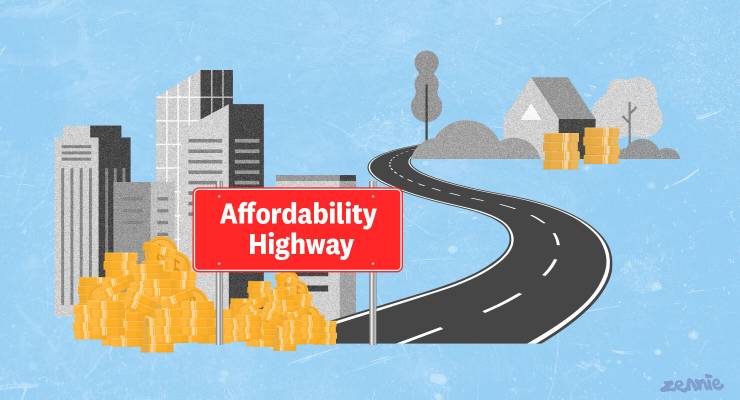
Australia’s largest states and cities are rightly worried about the exodus of young people, but we must go much further than the current policy mix to reverse it.
The latest data from the Australia Bureau of Statistics shows that New South Wales lost more than 37,000 people to interstate migration in the year through September 2022. Victoria also lost population to the tune of more than 15,000 individuals. More than four-fifths of those individuals ended up in Queensland.
This interstate migration data is not broken down by age group, but the trends are disastrous. We know anecdotally that young people in particular are being pushed out of Australia’s most expensive cities — the very places where they have the greatest opportunity for high-level careers in the most innovative fields.
Australia’s major cities account for nearly 80% of the national economy, almost 75% of jobs, roughly 65% of small- and medium-sized businesses and 80% of large corporations.
These cities compound their advantages year after year. Not even the work-from-home revolution has weakened their dominance. That’s why, for every suburb in Queensland where residents earn on average more than $100,000, there are 11 such suburbs in New South Wales.
If you are under 40 and want to build a career in the top 10% or 1% of earners, it is almost a requirement that you locate yourself in Melbourne or Sydney. Brisbane is next best, but is relatively small and dependent on the declining petroleum and coal industries.
Over lunch not long ago, a senior executive at a publicly traded company told me her home in Brisbane is why she earns substantially less than others who do a similar job in the two bigger cities.
So why are young people fleeing from the places with the most opportunity? The answer is the cost of living. Because of the inflation shock of the past year, we forget this is a long-simmering problem. Household gas prices are 235% higher today than 20 years ago. Medical expenses are up 210%, and electricity is up 175%. The median house price in Sydney is 168% higher.
Is it any wonder that only every tenth young person can afford a home?
One reason younger Australians cannot afford today’s higher prices is that government policies increasingly concentrate wealth into the hands of older Australians like myself.
The wealth gap between older and younger Australians has nearly doubled over the past few decades. Yet, a 2019 Grattan Institute report found young Australians pay more tax than they receive in benefits. Older Australians are net drawers.
We once considered seniors to be at the greatest financial risk, but today it is typically our young people who struggle the most.
As a society, we have been neither ambitious nor imaginative enough when seeking solutions that would put more money into younger pockets, even if that means taking it from their better-off, older compatriots.
We can start with a small gesture. Let’s means-test the seniors’ card so the wealthiest Australians no longer benefit. Instead, institute a “youth card” whose discounts help ease cost-of-living pressures for individuals under 35.
A more significant step would be to increase taxes that wealthy retirees must pay while reducing the burden on young people, especially those with lower incomes and children. This is the opposite of what the government is doing with stage three tax cuts, which come into force from July next year.
Young people can’t break into many suburbs because empty nesters can’t afford to pay tens of thousands of dollars in stamp duty to move to something smaller. Let’s remove that obstacle by accelerating the shift from stamp duty to land tax.
Then we can further encourage empty nesters, a group I will belong to in just a few years, by raising council rates on large homes with only one or two occupants.
Finally, we can levy tax on inheritances just like we do on other types of income. Charging a rate of 20% on bequests above $500,000 would enable us to fund income tax cuts that would leave most under-50s better off.
Let’s move the debate towards ambitious policies that would actually help younger Australians build fulfilling and prosperous lives in our biggest cities. That would be good for all of us.








Crikey is committed to hosting lively discussions. Help us keep the conversation useful, interesting and welcoming. We aim to publish comments quickly in the interest of promoting robust conversation, but we’re a small team and we deploy filters to protect against legal risk. Occasionally your comment may be held up while we review, but we’re working as fast as we can to keep the conversation rolling.
The Crikey comment section is members-only content. Please subscribe to leave a comment.
The Crikey comment section is members-only content. Please login to leave a comment.